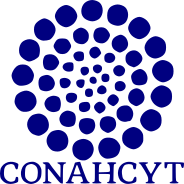The aim of this study was to assess the knowledge and medicinal use of corongoro, Ziziphus amole (Sesse & Moc.) M.C. Johnst., as reported by the inhabitants of Xochipala, Guerrero, through a questionnaire and to analyze their responses through statistical
Abstract
Mexico is important as a producer and
consumer of grains, of which maize is
paramount owing to its extensive use as
human food. The problematic phytosanitary
issue with this crop is the high susceptibility
of the grains to contamination by dangerous
mycotoxins produced principally by the
genera Aspergillus and Penicillium. In
this experiment the antifungal activity of
gobernadora (Larrea tridentata L.) extracts
was evaluated on the in vitro growth of
Aspergillus flavus and Penicillium sp. To
evaluate the antifungal activity we used two
techniques: the agar-well diffusion method
with addition of 50 μL of the extract at four
concentrations (100, 200, 400 and 600 mg/
mL) and the agar-dilution method. This
194
Núm. 32: 193-205 Agosto 2011
consisted of making a homogeneous mixture
of the extracts at a concentration of 100 mg/
mL and potato dextrose agar (PDA). The
extract activity was reflected in the formation
of an inhibition halo in the first technique
and radial mycelial growth in the second.
The results obtained from both techniques
suggest clear antifungal effects, especially
with ethanol and methanol extracts. These
were highly efficient, showing minimal
inhibitory concentrations that ranged from
3 to 7 mg/mL and achieving up to 100%
inhibition of both fungi.
Downloads
Published
Issue
Section
License

Polibotánica by Departamento de Botánica de la Escuela Nacional de Ciencias Biológicas del Instituto Politécnico Nacional se distribuye bajo una Licencia Creative Commons Atribución-NoComercial-CompartirIgual 4.0 Internacional.




















